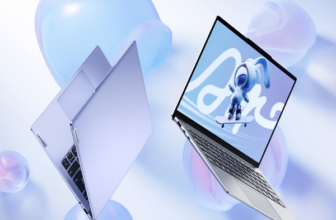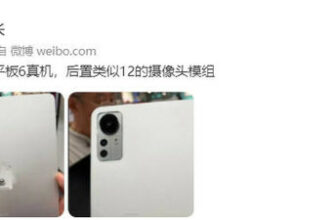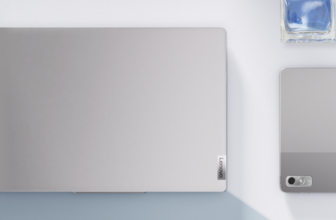[Tinydeal Technology]On February 26, local time, Lenovo launched an eye-catching new product – ThinkBook transparent concept laptop at the World Mobile Communications Conference (MWC 2024).
Foreign media have started to experience this Lenovo laptop, and its uniqueness is that it has a transparent screen. But considering that this is just a prototype, its practicality remains to be discussed.

Imagine playing the piano on your laptop’s keyboard while browsing articles, and then closing the browser window. What’s even more amazing is that you can see a bouquet placed behind the computer screen… and you can see it directly through the screen.
This Lenovo transparent laptop was unveiled at the Mobile World Congress 2024, attracting much attention. But we must remember that it is not a commercial product at the moment. Nevertheless, this ThinkBook prototype gives us a glimpse of the innovative products that Lenovo may launch in the future.
Very future, but there is room for improvement
From the outside, it does look pretty and impressive, but what exactly is it useful? At the conference in Barcelona, Lenovo revealed the design philosophy of this prototype for us.
First of all, we have to admit that this prototype is not as stunning as the renderings we saw on the Internet before. It is more like a concept product that needs further improvement. That’s it, but its appearance design is still unique and has a futuristic feel.

So, what is the use of this computer? Before answering this question, let’s take a look at its hardware configuration. This computer comes with a 17.3-inch miniature LED screen with a resolution of 720p, which is indeed a bit disappointing.
In terms of visual effects, although some are not satisfactory, Lenovo said they are considering upgrading it to the high-end market and discussing the possibility of a “2K” panel. At the same time, the maximum overall brightness of this prototype reaches 1,000 nits, which is good in similar products. A Lenovo spokesperson also assured the outside world that they are studying how to improve the display effect of micro LEDs.
In terms of operation, this prototype does not use a traditional physical keyboard. Instead, a touch surface can be used to display both keys and as areas for stylus drawing. Faced with the lack of haptic feedback when typing and the slow response of the trackpad, foreign media expressed concerns. But Lenovo said they are testing different options and use cases and do not rule out the possibility of integrating physical keyboards or improving existing solutions.
For more gadget insights, visit TinyDeals Blog.

From the outside, this computer seems to be quite solid. The base design stands out with a sturdy build. Lenovo placed the micro LED panel between two protective glass layers and added a Gorilla Glass 3 coating. This design helps prevent damage during daily use. When foreign media opened and closed this laptop many times, they found that there was no unpleasant feeling in the hinge part. Overall, this prototype performs quite well in terms of design and durability.
No confidentiality?
So, back to the original question: What is the use of this computer? Lenovo has given some suggestions. You can put something on the other side of the screen and see it directly through the screen. Meanwhile, the AI-based platform will provide interactive features through a camera located on the back of the dock, allowing you to see the same thing.

For example, you can imagine an augmented reality application scenario, or interact with a conversation agent, which provides information and inspiration around the objects you see on the screen. Although there are some demonstrations about this, it still seems to be somewhat abstract to the user. However, we can also imagine the application of this computer in scenes such as hotels or company front desks. For example, when displaying the interface to the opposite person, you don’t need to flip the computer, just enable the mirror reverse display function.
Of course, this also raises the issue of confidentiality. Currently, if you can still guess what is displayed on the screen on the other side of the screen, Lenovo is considering a solution to make the tablet work properly inan opaque state. Several possible implementation methods are currently being studied.

Finally, foreign media believe that the true value of this product is mainly reflected in aesthetics and social aspects. It’s cool to have a transparent screen on the one hand; it also removes a visual impairment on the other hand—you can see everyone in front of you even though they’re using a computer. This more open design concept may become a trend in the future development of laptops.
However, we must also keep a rational view of this product. At present, it is just a prototype and still has a long way to go before commercialization. And from a practical point of view, it does have a lot to improve. But no matter what, this Lenovo transparent laptop has brought us a lot of freshness and inspiration. Perhaps many new forms of laptops can draw design inspiration from it in the future.
Written at the end
ThinkBook has given us a glimpse of Lenovo’s future innovation direction. From hardware configuration to appearance design to its potential application scenarios, this computer is full of endless possibilities. It challenges our perception of traditional laptops, perfectly blending aesthetics, practicality, and future technology.
The transparent screen design lets users see the world behind it, creating a stunning visual effect. It also introduces a new interactive experience. AI-powered features further expand its applications, making it useful in education, entertainment, and business.
The launch of the Lenovo ThinkBook transparent concept laptop is a bold and innovative move. It showcases the future of laptops and sparks imagination about upcoming technology.
For more details about cutting-edge tech, visit TinyDeals Blog.






